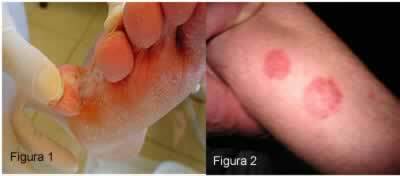Have you ever imagined being at sea and seeing a great white shark? Scary, isn't it? No wonder everyone has great fear of this animal, as he is known as the great predator of the ocean!
O White shark(Carcharodon carcharias) it is up to eight meters long, an incredible two tons of weight and lives for approximately 70 years. In terms of speed, the fishimpresses, reaching around 60 km/h.
Despite attacking a lot of surfers, he's not a predator of humans. Their diet is based on seals, sea lions, dolphins, turtles and elephant seals. The white shark is considered the top of the ocean food chain and is therefore extremely important for this. environment, as it acts by controlling the population of its prey, which consequently prevents it from increasing exaggerated.
Your attack, which is done in a solitary way, usually hits the victim from below, making escape difficult. Its sharp teeth and strong jaw make this attack commonly fatal. It has more than three thousand teeth in its mouth, which, unlike us, are arranged in several rows. In addition, the white shark's “teeth” are up to seven centimeters long.
White sharks are known for their curiosity, as they bite whatever they can find to better identify objects. Thus, attacks on humans are not always for obtaining food. Usually they are just trying to figure out what that object is, however, due to its strong jaw, they can end up killing people. It is estimated that, on average, sharks (including other species) kill three to five people a year worldwide.

Great white sharks attack their prey from below, making it difficult to escape
These animals are quite adapted to the environment where they live and, since the emergence of their species, they have hardly changed. They are able to smell the "smell" of blood from great distances and detect electrical fields through a sense known as electroreception.
White sharks love the waters of the planet's tropical and temperate regions. An intriguing fact is that, although southern Patagonia has large numbers of seals and sea lions, white sharks are not seen in these areas.
They are ovoviviparous animals, that is, the embryo develops inside an egg that is inside the mother's body. White sharks normally give birth to 5 to 10 offspring.
Currently, the population of white sharks has been decreasing considerably, mainly due to overfishing. Fishermen use their teeth and fins, the latter being used mainly to make soup. In many parts of the world, they are already protected by laws that prohibit hunting, however, many people fish clandestinely. (Meet some endangered animals)
Heads up:When you see signs on the beach indicating areas of danger of attack, do not enter the sea. There are recorded cases of people dying from shark attacks in these areas, so don't take chances. It is also worth noting that, on beaches where these warnings do not exist, the risk of sharks is minimal, so do not feel panic when entering the sea.
By Ma. Vanessa dos Santos


